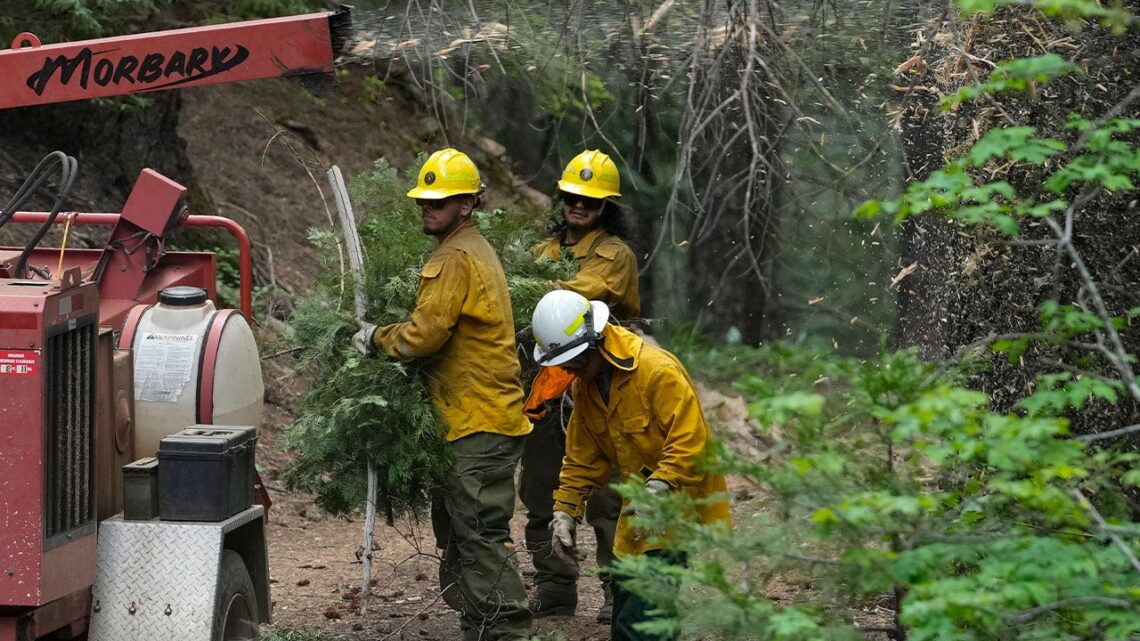Using chainsaws, heavy machinery and controlled burns, the Biden administration is trying to turn the tide on worsening wildfires in the U.S. West through a multi-billion dollar cleanup of forests choked with dead trees and undergrowth.
Yet one year into what’s envisioned as a decade-long effort, federal land managers are scrambling to catch up after falling behind on several of their priority forests for thinning even as they exceeded goals elsewhere. And they’ve skipped over some highly at-risk communities to work in less threatened areas, according to data obtained by The Associated Press, public records and Congressional testimony.
With climate change making the situation increasingly dire, mixed early results from the administration’s initiative underscore the challenge of reversing decades of lax forest management and aggressive fire suppression that allowed many woodlands to become tinderboxes. The ambitious effort comes amid pushback from lawmakers dissatisfied with progress to date and criticism from some environmentalists for cutting too many trees.
1 OF 2 FIRES IN NEW JERSEY’S PINE BARRENS FULLY CONTAINED
Administration officials in interviews and during testimony maintained that the thinning work is making a difference. Work announced to date, they said, will help lessen wildfire dangers faced by more than 500 communities in 10 states. But they also acknowledged finishing the task will require far more resources than what’s already dedicated.
“As much money as we’re receiving, it’s not enough to take care of the problems that we are seeing, particularly across the West,” said Forest Service Chief Randy Moore. “This is an emergency situation in many places, and we are acting with a sense of urgency.”
Big Money For Big Problem
Congress in the last two years approved more than $4 billion in additional funding to prevent repeats of destructive infernos that have torched communities including in California, Colorado and Montana.
By logging and burning trees and…
Read the full article here







